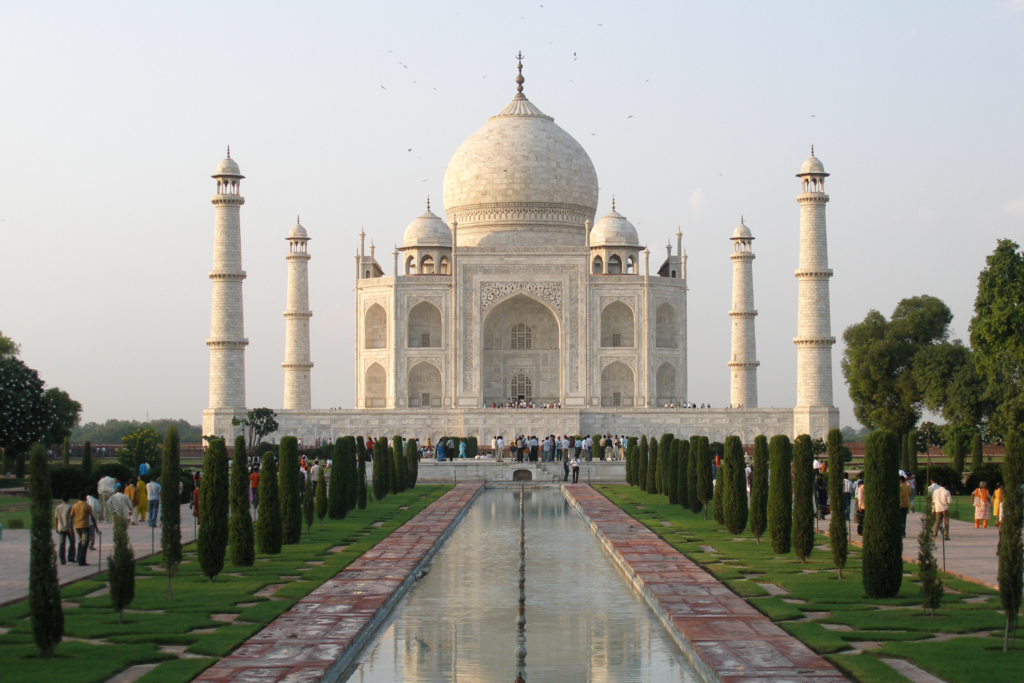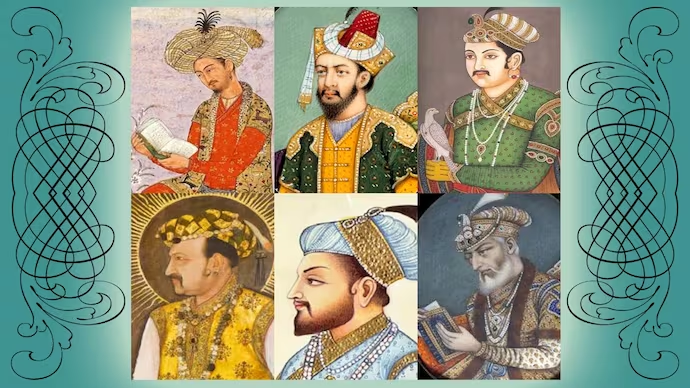Introduction: A Glimpse into Mughal Grandeur
The Mughal Empire in India, spanning from the early 16th century to the mid-19th century, remains one of the most influential and dynamic periods in Indian history. With its roots in the conquests of Babur and extending through a series of remarkable rulers, the Mughal era reshaped the Indian subcontinent’s cultural, political, and architectural landscape. This article delves into the empire’s rise, achievements, and enduring legacy, providing a detailed timeline and expert insights to offer a comprehensive view of this historic empire.

Timeline of Key Events and Figures in the Mughal Empire
1526: The Dawn of Mughal Rule with Babur’s Victory
The Mughal Empire began with the victory of Babur, a descendant of Timur and Genghis Khan, over the Sultan of Delhi, Ibrahim Lodi, at the Battle of Panipat on April 20, 1526. This battle marked the establishment of Mughal rule in India. Babur, born on February 14, 1483, in present-day Uzbekistan, laid the foundation for a new dynasty that would dominate the Indian subcontinent for centuries.
1556-1605: Akbar’s Reign – The Golden Era of Mughal Administration and Culture
Akbar, the grandson of Babur, ascended the throne in 1556 following the death of his father, Humayun. Akbar’s reign, lasting until 1605, is renowned for its administrative reforms, religious tolerance, and cultural patronage. On November 11, 1556, Akbar was declared emperor at the age of 13. His policies aimed at integrating the diverse cultures within his empire, including his introduction of the Din-i Ilahi, a syncretic religion intended to foster harmony among his subjects. Akbar’s era saw the flourishing of Mughal painting and literature.
1605-1627: Jahangir’s Contributions to Art and Culture
Jahangir, Akbar’s successor, ruled from 1605 until his death in 1627. Known for his patronage of the arts and his personal interest in painting, Jahangir’s reign saw a significant development in Mughal art. His emphasis on detailed and realistic depictions in miniature paintings set new standards. Jahangir’s court attracted numerous artists, including Ustad Mansur and Abu’l-Hasan, who contributed to the empire’s artistic legacy.
1628-1658: Shah Jahan – Architect of Iconic Monuments
Shah Jahan, Jahangir’s son, reigned from 1628 to 1658. His era is particularly celebrated for its architectural achievements. Shah Jahan commissioned the construction of the Taj Mahal, completed in 1653, as a mausoleum for his beloved wife, Mumtaz Mahal. The Taj Mahal, located in Agra, is a UNESCO World Heritage site and a symbol of eternal love. Other significant constructions during his reign include the Red Fort in Delhi and the Jama Masjid, both of which underscore the architectural brilliance of the Mughal period.
1658-1707: Aurangzeb’s Expansion and the Empire’s Decline
Aurangzeb, Shah Jahan’s son, expanded the Mughal Empire to its greatest territorial extent. However, his reign, which lasted from 1658 to 1707, marked the beginning of the empire’s decline. Aurangzeb’s policies, including the re-imposition of Jizya tax and a more orthodox approach to governance, led to increasing dissent among the empire’s diverse population. His military campaigns and administrative decisions strained the empire’s resources and contributed to its fragmentation.
1707-1857: The Decline and Fall of the Mughal Empire
Following Aurangzeb’s death in 1707, the Mughal Empire experienced a period of fragmentation and decline. Regional powers such as the Marathas, Sikhs, and Rajputs began to assert their independence, and the empire’s central authority weakened. By the time of the British East India Company’s rise, the Mughal emperors had become figureheads, with real power held by colonial administrators. The formal end of the Mughal Empire came with the British victory in the Indian Rebellion of 1857, leading to the establishment of British Raj.

Expert Opinions on the Mughal Empire’s Legacy
Experts have long studied the Mughal Empire’s impact on South Asian history. According to Dr. William Dalrymple, a prominent historian and author of “The Anarchy,” the Mughal era represented a high point in the Indian subcontinent’s cultural and political history. He emphasizes that the Mughals’ ability to blend Persian and Indian elements created a unique cultural synthesis that remains influential today.
Dr. Romila Thapar, an esteemed historian and author of “A History of India,” notes that the Mughal period was instrumental in shaping the Indian socio-political landscape. She highlights the Mughal Empire’s administrative innovations and its role in fostering a diverse and pluralistic society.
Current Relevance and Updated Insights
In recent years, new archaeological discoveries and scholarly research have continued to shed light on the Mughal Empire. Recent excavations in Delhi and Agra have uncovered additional insights into Mughal urban planning and daily life, further enriching our understanding of this remarkable period. These findings highlight the sophistication of Mughal architectural techniques and urban infrastructure.
Conclusion: Reflecting on the Mughal Empire’s Enduring Influence
The Mughal Empire in India stands as a monumental chapter in the history of the Indian subcontinent. From Babur’s initial conquest to the architectural marvels of Shah Jahan and the eventual decline under Aurangzeb, the Mughal era was marked by both grandeur and complexity. The empire’s contributions to art, culture, and governance continue to resonate in modern India, reflecting a rich legacy that shapes the subcontinent’s historical and cultural identity.
For Regular News and Updates Follow – Sentinel eGazette
Sources:
- Dalrymple, William. The Anarchy: The Relentless Rise of the East India Company. Bloomsbury Publishing, 2019.
- Thapar, Romila. A History of India. Penguin Books, 1990.
- UNESCO World Heritage Centre. Taj Mahal.
- British Library. Mughal Architecture.
FAQs
Q1: What was the main goal of Akbar’s administration during his reign?
Akbar’s primary goal was to consolidate and expand his empire while fostering religious tolerance and integrating diverse cultures. He introduced administrative reforms and promoted a policy of inclusivity to stabilize and grow his rule.
Q2: How did the Taj Mahal come to be built?
The Taj Mahal was commissioned by Shah Jahan in 1631 as a mausoleum for his beloved wife, Mumtaz Mahal. The construction, which took about 22 years, was completed in 1653 and remains a symbol of eternal love and Mughal architectural brilliance.
Q3: What were the key reasons for the decline of the Mughal Empire?
The decline of the Mughal Empire can be attributed to Aurangzeb’s orthodox policies, military overreach, and administrative inefficiencies. Additionally, regional powers asserting independence and the growing influence of the British East India Company contributed to the empire’s fragmentation.
Q4: How did Jahangir influence Mughal art?
Jahangir’s reign was marked by significant advancements in Mughal art, particularly in miniature painting. His patronage attracted artists who developed detailed and realistic styles, enhancing the empire’s artistic heritage.
Q5: What role did regional powers play in the decline of the Mughal Empire?
Regional powers like the Marathas, Sikhs, and Rajputs began asserting their independence, weakening Mughal control. Their rise and resistance contributed to the fragmentation and eventual decline of central Mughal authority.